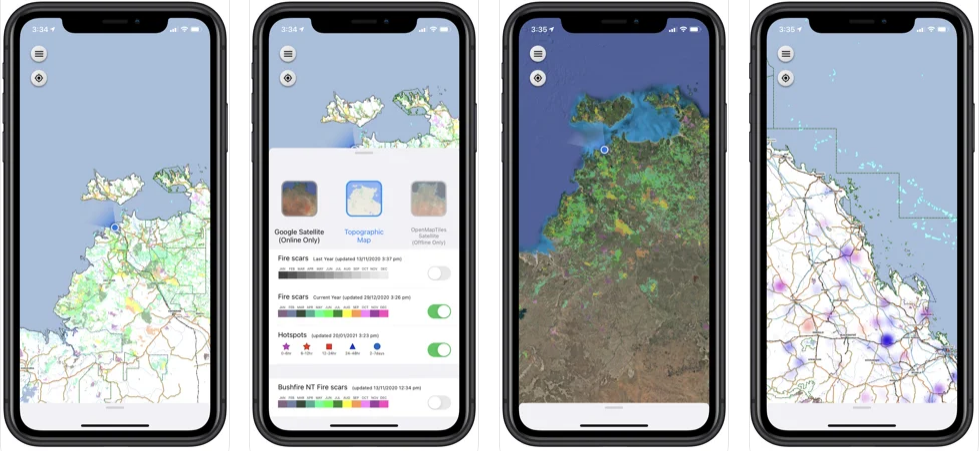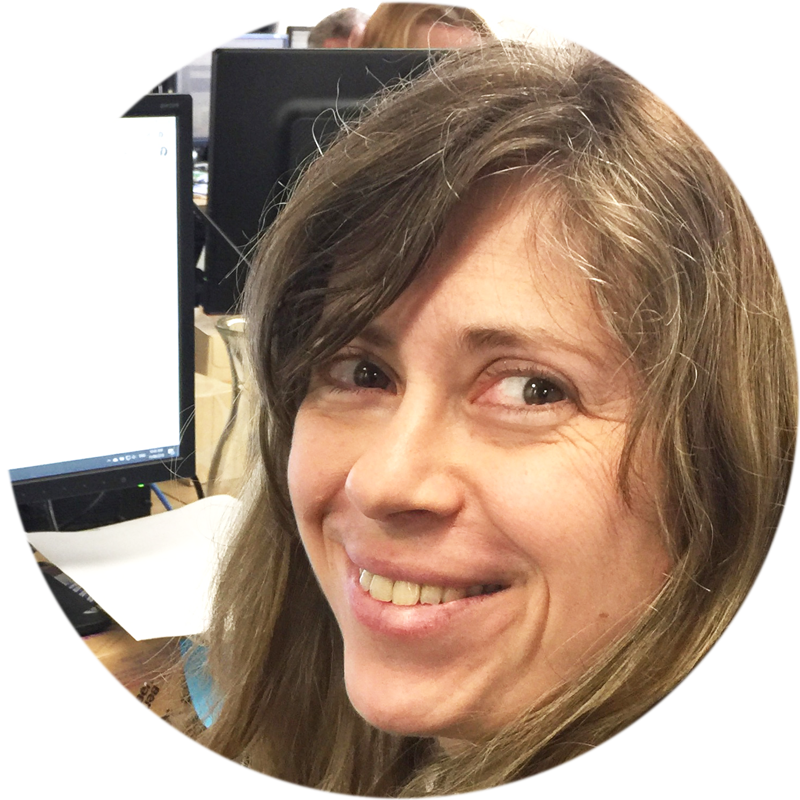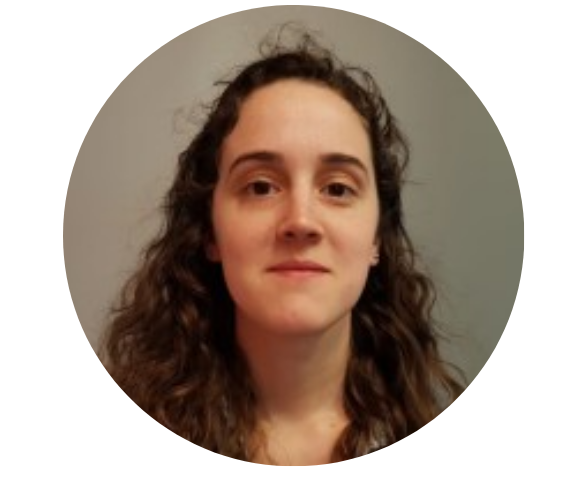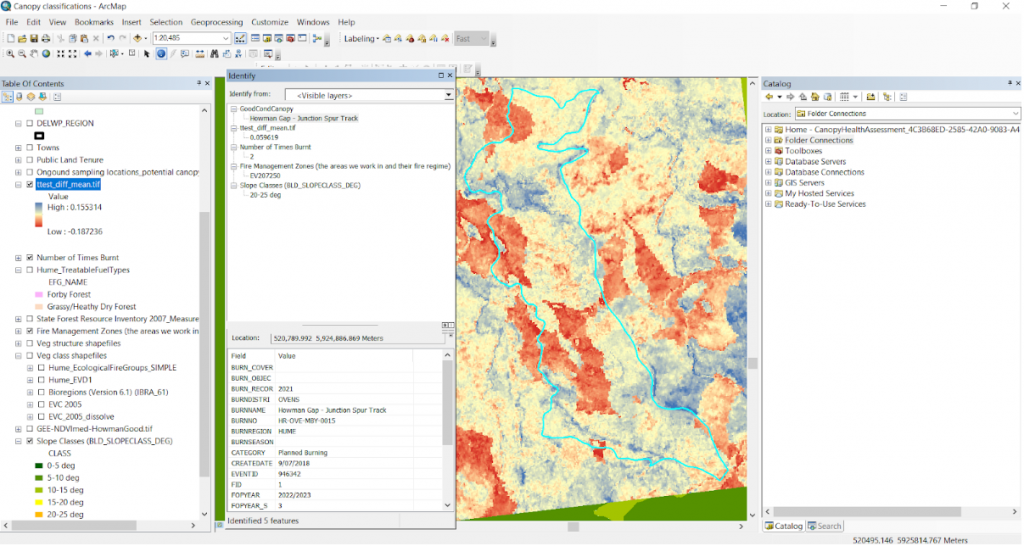Our Data Science team meet regularly to talk about our workloads, upcoming projects and emerging technologies. With software engineers, business analysts, spatial analysts and technical project managers on board, we have quite a variety of skills and experience; but a shared passion for leveraging all sorts of data sources, tools, software and infrastructure. I think we all love coffee too!
The part of our team that normally work with GIS (Geographic Information Systems) software are noticing a shift from static to dynamic deliverables, and they are adapting their skills and knowledge to meet a changing demand in consultancy. The solutions they are contributing to now are data-driven decision support tools, monitoring dashboards, change detection toolsets, apps and websites. Desktop analysis is still a key feature of the workflow; but they work more closely these days with our software engineers and research partners to go deeper into the tech, designing models and technical processes that can be run on cloud infrastructure such as our solutions using Amazon Web Services. More and more we are leveraging real-time data sources to assist our clients too like daily satellite feeds, web APIs, sensor arrays or business systems data.
I thought it could be timely to check in with our (Spatial) Data Scientists, and ask them to look back over the last 11 months or so to recap on some of the interesting projects we’ve been involved in. This is what they had to say:
Jake Geddes – Senior Spatial Analyst
1. What are you working on at the moment, and what makes your spatial work special?
I’m currently working alongside a resources company’s Heritage Team to consolidate their heritage data into a master database as well as offering GIS support. I think the majority of spatial work we do at Gaia Resources is quite special, because you often get the feeling that you really are making a positive difference to the environment and people’s lives.
In another project this year, I advised our mobile app developers who were working on algorithms to visualise bushfires in real time. I also work with clients to establish spatial data standards around biodiversity and other environmental data to support their regulatory reporting requirements.
2. We are getting close to the end of the financial year – what was the highlight for you in the last 12 months?
There have been a few highlights for me despite a somewhat difficult and chaotic year for “Earth”:
- Gaining a deeper understanding of how spatial and software engineering interact, such as in the Retromaps project I was involved in.
- Supporting multiple environmental organisations in collaboration and conservation (e.g. WABSI, Greening Australia, multiple NRM groups)
- I was able to lead a GIS health check investigation (find out more about these here)
3. What do you see as the link between Data Science and GIS?
Consolidating Big Data sources into something usable and effective can be quite challenging, but there are now numerous tools and processes in GIS which move beyond the consumption of raw data products and create links with data science workflows. Being able to incorporate a geographic and visual aspect is a great advantage of GIS in Data Science applications.
4. Any new widgets or tools you’ve discovered, that you’d like to tell the world about?
I have been having a play with a few statistical packages and looking into how they can integrate with our spatial analyses. These include:
- R software for statistical modelling
- GeoPandas (and Fiona): an open source project to make working with geospatial data in python easier.
- kepler.gl: an open source geospatial analysis tool for large-scale data sets.
- enso.org: a graphical user interface for automating data-driven processes
For years now I have been getting stuck into multiple plugins in the free and open source QGIS software, such as the Semi-Automatic Classification Plugin (SCP) and data plotly.
Barbara Zakrzewska – Spatial Analyst
1. What are you working on at the moment, and what makes your spatial work special?
At the moment I am working for a mining company and helping them with environmental approvals, disturbance and rehabilitation. It’s a huge company that used contractors before the current GIS Coordinator joined and started setting up a new holistic system. One of my favorite aspects of this type of work is building spatial systems in a manual sense and then creating models that automate repeatable workflows. I like building single-source-of-truth geodatabases, where incoming data is either handled automatically (e.g. via government download, seamless data feeds, custom scripts) or signed off by a knowledgeable data owner.
In other recent work, I supported our mobile app developers on a Transport Innovation project, to standardise and translate council parking data for inner Sydney suburbs.
2. We are getting close to the end of the financial year – what was the highlight for you in the last 12 months?
My highlight has been my current roll, where I have access to proprietary software such as FME and exploration data in enterprise databases like acQuire. I have created several useful models that combine business and spatial data, and was asked for input on building and improving the enterprise GIS system.
3. What do you see as the link between Data Science and GIS?
I see GIS and other spatial modelling tools as vital components of many Data Science applications. Several GIS programs come with data science plugins, calculators and modelling tools that enable further analysis and data interoperability.
4. Any new widgets or tools you’ve discovered, that you’d like to tell the world about?
While I did not discover new amazing tools in the last year, I was able to use FME and QGIS – and my knowledge of the business requirements – to achieve some interesting and valuable outputs.
Rocio Peyronnet – Spatial Analyst
1. What are you working on at the moment, and what makes your spatial work special?
I am currently working on a change detection in forest canopy health project for Victorian government. We developed two models that account for variation in the canopy condition using Sentinel-2 imagery, in cloud-based platforms: Jupyter notebooks and Google Earth Engine. What makes this work special is that this model will help in the operational assessment of vegetation condition in an easy and quick way, allowing the user to focus on the areas that require attention more urgently.
2. We are getting close to the end of the financial year – what was the highlight for you in the last 12 months?
Definitely, knowing that the work we are doing will support fire risk assessments and prevention of this kind of risk is the highlight of my year. I have only been part of Gaia Resources a short time, but I am really happy to be working for a consultancy and team focused on the delivery of sustainable technology solutions.
3. What do you see as the link between Data Science and GIS?
We are living in times in which data is constantly generated. Data scientists manipulate and analyse all that data to obtain information from it, but when the location parameter is present in the data, GIS can be put into action. By using GIS we can visualise spatial patterns in our data and present them in a map, providing a better understanding of where our information is positioned.
4. Any new widgets or tools you’ve discovered, that you’d like to tell the world about?
I am personally fascinated by Digital Earth Australia, a platform for open source analysis developed by the Australian government. It uses spatial data and satellite imagery to detect changes across Australia, providing codes and tutorials so users can perform their analysis, all free of cost.
————————————
What we’ve noticed is that most of our client engagements are no longer just standalone analyses, maps or even webmaps. They want consultants to provide value to the business – through streamlined workflows , integrated systems and insights – to help them make more effective and timely decisions. This invariably involves our spatial analysts, business analysts, software and devops engineers to come together to bring the solution together. As Data Scientists, we all agree that there are loads of tools and data sources on offer – but that the key to a successful project is to focus on the challenge or outcome, and to build out a plan that leverages the right tools, data and modelling approach for the task at hand.
If you have a perspective on the changing landscape of data science and the spatial industry, feel free to give me a call or an email. Or, strike up a conversation on our Twitter, LinkedIn or Facebook pages.
Chris


 Real-time bushfire hotspots and fire scars are generated from satellite imagery and rendered on a mobile app from web services such as WMTS and GeoJSON feeds.
Real-time bushfire hotspots and fire scars are generated from satellite imagery and rendered on a mobile app from web services such as WMTS and GeoJSON feeds.


Comments are closed.